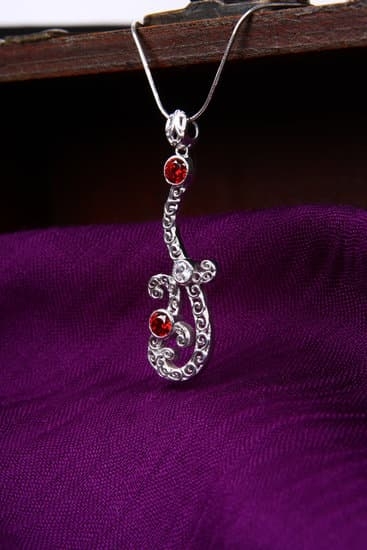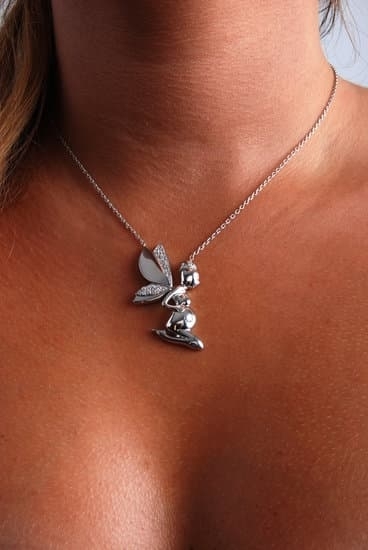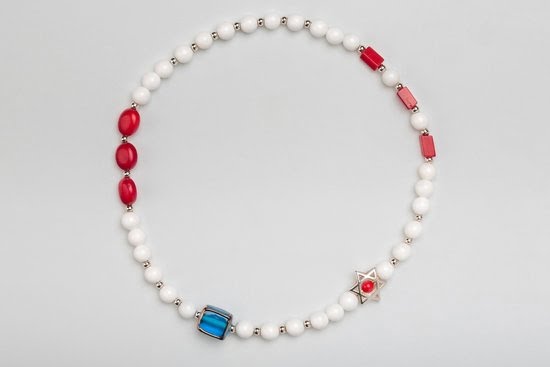What is fine estate jewelry? Fine estate jewelry refers to high-quality, previously owned jewelry that holds significant value due to its craftsmanship, historical significance, and unique design. With a rich history and timeless appeal, fine estate jewelry continues to captivate the fashion industry and consumers alike.
Originating from different periods and styles, estate jewelry has become a sought-after item for those looking for one-of-a-kind pieces with a story to tell. This introduction will delve into the characteristics of fine estate jewelry, how to identify it, popular periods and styles, market trends, caring for estate jewelry, famous pieces, and the enduring appeal and investment potential of these exquisite items.
As we explore the world of fine estate jewelry in this article, we will uncover the beauty and significance of these timeless pieces that continue to hold great value in today’s modern world. From understanding what truly makes a piece of jewelry an “estate” piece to recognizing its worth in the market and beyond, this comprehensive guide will provide valuable insights for both collectors and enthusiasts of fine estate jewelry.
Characteristics of Fine Estate Jewelry
Fine estate jewelry is a category of jewelry that encompasses pieces that are not only vintage but also of high quality and historical significance. What sets fine estate jewelry apart from other types of jewelry is the craftsmanship, unique designs, and the types of gemstones used. These pieces often carry a sense of timeless elegance and hold sentimental value due to their historical background.
One of the characteristics of fine estate jewelry is the use of high-quality gemstones such as diamonds, emeralds, sapphires, and rubies. These gemstones are often set in precious metals such as gold or platinum, adding to the luxurious appeal of estate jewelry. The craftsmanship involved in creating these pieces is also exceptional, with intricate detailing and meticulous care put into every aspect of the design.
The historical significance of estate jewelry also sets it apart, as many pieces are reflective of specific periods and styles such as Art Nouveau, Art Deco, Victorian, and Retro. Each period has its own distinct aesthetic and design elements that make estate jewelry from that era highly sought after by collectors and enthusiasts alike.
| Characteristics | Details |
|---|---|
| Gemstones | Diamonds, emeralds, sapphires, rubies |
| Craftsmanship | Intricate detailing and meticulous care |
| Historical Significance | Reflective of specific periods such as Art Nouveau, Art Deco, Victorian, and Retro |
How to Identify Fine Estate Jewelry
Fine estate jewelry holds a unique allure for many jewelry enthusiasts and collectors. Its rich history, exquisite craftsmanship, and timeless designs make it a prized possession for those who appreciate its beauty and value. But with so many different types of jewelry on the market, how can one identify fine estate jewelry? Here are some tips to help distinguish fine estate jewelry from other types of jewelry.
Tips for Distinguishing Fine Estate Jewelry From Other Types of Jewelry
One way to identify fine estate jewelry is by examining its overall quality. Estate pieces are typically well-crafted, with attention to detail and high-quality materials. Look for intricate designs, delicate settings, and carefully selected gemstones as indications of fine estate jewelry.
Another important factor in identifying fine estate jewelry is its age. Estate pieces are typically older, often dating back several decades or even centuries. This age can be reflected in the style of the piece, the type of metal used, and any historical significance it may hold.
Hallmarks and Signatures to Look For
When examining estate jewelry, it’s also crucial to check for hallmarks or signatures that indicate the piece’s authenticity and origin. These markings can provide valuable information about the materials used, as well as the designer or manufacturer of the piece. Hallmarks may include stamps indicating the purity of precious metals or a maker’s mark that identifies the creator of the piece.
Common Materials Used in Estate Jewelry
In addition to hallmarks and signatures, understanding the common materials used in estate jewelry can aid in its identification. Fine estate jewelry often features precious metals such as gold, platinum, or silver, as well as high-quality gemstones like diamonds, sapphires, emeralds, and rubies. By familiarizing oneself with these materials and their characteristics, one can better discern whether a piece is indeed fine estate jewelry.
Popular Periods and Styles of Fine Estate Jewelry
Art Nouveau is a popular period for fine estate jewelry, characterized by intricate designs inspired by natural forms such as flowers, animals, and curves. This style was prominent in the late 19th and early 20th centuries, with jewelry pieces featuring flowing lines and bold colored gemstones. Art Nouveau estate jewelry often includes enamel work and delicate craftsmanship, making them highly sought after by collectors and enthusiasts.
The Art Deco period, which emerged in the 1920s and lasted through the 1930s, is known for its geometric shapes, bold colors, and use of platinum. Fine estate jewelry from this era displays a modern and symmetrical aesthetic, with influences from cubism, Egyptian motifs, and industrialization. Art Deco pieces often feature diamonds, emeralds, sapphires, and rubies set in intricate patterns that reflect the glamorous lifestyle of the time.
The Victorian era produced some of the most iconic fine estate jewelry pieces. This period spans from 1837 to 1901 and is known for its sentimental symbolism in jewelry design. Popular styles include mourning jewelry with black enamel and hairwork, as well as romantic motifs such as hearts, flowers, and bows. Victorian estate jewelry often contains pearls, opals, garnets, and other colorful gemstones set in ornate gold or silver settings.
The Retro period of fine estate jewelry emerged during the 1940s as a response to wartime restrictions on luxury materials. Jewelry from this era reflects Hollywood glamour with bold designs influenced by patriotic themes like red, white, blue gemstones or flag motifs. Retro estate jewelry often features large cocktail rings adorned with aquamarine stones or citrines set in rose or yellow gold.
Understanding these popular periods and styles of fine estate jewelry can help both buyers and sellers appreciate the historical significance of each piece. Whether you are a collector looking to add to your collection or someone considering selling estate jewelry items passed down through generations – recognizing these distinct aesthetics will assist you in determining their value. It also allows you to have a deeper appreciation for these exquisite pieces that have stood the test of time.
The Market for Fine Estate Jewelry
To understand the market for fine estate jewelry, it’s important to look at current trends in estate jewelry collecting. Many people are drawn to the nostalgia and timeless elegance of vintage pieces, driving the demand for fine estate jewelry from different periods and styles. Additionally, there is a growing interest in sustainable and ethical fashion choices, making estate jewelry an attractive option for those seeking environmentally friendly accessories.
When it comes to the value of fine estate jewelry, its historical significance plays a crucial role. Collectors often seek out pieces that reflect specific periods or styles such as Art Deco, Victorian, or Retro designs. The rarity and uniqueness of these items also contribute to their value, making them desirable investments for both collectors and individuals looking to add a touch of vintage glamour to their wardrobe.
Buying and selling fine estate jewelry has become increasingly popular through reputable dealers, online auctions, and specialty vintage jewelry stores. With the accessibility of these marketplaces, individuals can explore a wide range of options when it comes to acquiring their own piece of history in the form of fine estate jewelry.
- Current trends in estate jewelry
- Demand for vintage jewelry
- Value of fine estate jewelry
- Buying and selling fine estate jewelry
Caring for Fine Estate Jewelry
Fine estate jewelry is a valuable and often treasured collection of vintage or antique pieces that hold historical significance and unique designs. Caring for fine estate jewelry is essential in preserving its value and beauty for generations to come. Whether you have inherited estate jewelry or purchased it as an investment or for personal adornment, proper care and maintenance are crucial.
When it comes to caring for fine estate jewelry, there are some important tips to keep in mind:
- Proper cleaning and maintenance techniques: Fine estate jewelry should be cleaned gently using mild soap and water, along with a soft brush. Avoid using harsh chemicals or abrasive materials, as they can damage the metal and gemstones. Regular maintenance, such as checking for loose stones or damaged settings, is also important in preventing further damage.
- Preserving the value of estate jewelry: To maintain the value of fine estate jewelry, it’s crucial to store it properly when not in use. Keep pieces separate from each other to avoid scratches, and store them in a fabric-lined jewelry box or a soft pouch to prevent dust and moisture buildup. Additionally, consider having estate jewelry professionally appraised and insured to protect its value.
- Storage and display options: Proper storage is key to preserving the beauty of fine estate jewelry. Store pieces in a cool, dry place away from direct sunlight to prevent fading of gemstones and metals. Consider investing in a jewelry armoire or display case with individual compartments to keep pieces organized and protected when not being worn.
Taking these steps to care for fine estate jewelry will ensure that these precious pieces remain stunning heirlooms that can be passed down through generations or sold as valuable investments.
By taking the time to properly care for fine estate jewelry, you can maintain its beauty, value, and historical significance for years to come. Whether your collection consists of Art Nouveau brooches or Victorian necklaces, preserving these timeless pieces ensures that their allure will endure for future generations to appreciate.
Famous Fine Estate Jewelry Pieces
Fine estate jewelry encompasses a wide range of historically significant and visually stunning pieces that have stood the test of time. Whether it’s an exquisite diamond necklace from the Art Deco era or a rare pearl brooch from the Victorian period, estate jewelry holds a special allure for collectors and enthusiasts alike. So, what is fine estate jewelry exactly?
It refers to high-quality, valuable jewelry that has been previously owned, often passed down through generations or acquired from estates. These pieces are prized for their craftsmanship, design, and historical significance, making them highly sought after in the world of haute couture and vintage fashion.
One of the defining characteristics of fine estate jewelry is its historical significance. Pieces from different periods such as Art Nouveau, Art Deco, Victorian, and Retro eras showcase unique styles and design elements that reflect the artistic and cultural influences of their time.
For example, Art Nouveau jewelry is known for its flowing lines and nature-inspired motifs, while Art Deco pieces feature geometric shapes and bold color contrasts. By understanding the distinct characteristics of each period, collectors can appreciate the artistry and craftsmanship behind these iconic pieces.
Moreover, famous fine estate jewelry pieces often have fascinating stories attached to them. From royal connections to legendary celebrity owners, these jewels carry a rich history that adds to their allure.
For instance, iconic pieces like the Hope Diamond or Princess Diana’s engagement ring are not only valuable in terms of their gemstones but also hold cultural significance due to their association with famous figures. As a result, they often become coveted items at auctions and sales events due to their historical provenance and enduring beauty.
| Characteristic | Description |
|---|---|
| Historical Significance | Pieces embody styles & design elements reflecting various periods such as Art Nouveau & Victorian. |
| Fascinating Stories | Jewels often have royal connections or were owned by celebrities like Princess Diana. |
Conclusion
In conclusion, fine estate jewelry holds a special place in the world of fashion and luxury. With its rich history, unique craftsmanship, and timeless designs, estate jewelry continues to captivate collectors, enthusiasts, and fashion connoisseurs alike. The enduring appeal of fine estate jewelry lies in its ability to blend historical significance with contemporary style, making it a versatile and sought-after choice for those looking to add a touch of sophistication to their accessories.
What is fine estate jewelry? It is not simply a piece of adornment, but a work of art that carries with it the legacy of previous generations. From the use of exquisite gemstones to the exquisite craftsmanship and signature styles from different periods such as Art Nouveau, Art Deco, Victorian, and Retro, fine estate jewelry offers a unique glimpse into the past while remaining relevant in today’s fashion landscape.
Furthermore, the investment potential of fine estate jewelry cannot be overlooked. As demand for vintage pieces continues to rise and the value of estate jewelry holds firm or even appreciates over time, these pieces have proven to be lucrative additions to any collection.
Whether buying or selling fine estate jewelry, one can expect that these timeless pieces will hold their value and continue to be treasured for generations to come. In essence, fine estate jewelry serves as an embodiment of history, artistry, and enduring beauty that transcends trends and retains its allure indefinitely.
Frequently Asked Questions
Is Estate Jewelry Worth Anything?
Estate jewelry can definitely be worth a significant amount, especially if it is from a well-known brand or designer. The value of estate jewelry is often determined by factors such as the quality of the materials, craftsmanship, rarity, and historical significance. Some estate jewelry pieces can fetch high prices in the market due to their inherent value and desirability.
What Is the Meaning of Estate Jewelry?
Estate jewelry refers to any jewelry that has previously been owned, whether it’s antique, vintage, or contemporary pieces. It can include a wide range of items such as rings, necklaces, bracelets, earrings, brooches, and more. Typically, estate jewelry is at least 50 years old or older, but this definition can vary depending on the source.
Is It Good to Buy Estate Jewelry?
Buying estate jewelry can be a great way to acquire unique and beautiful pieces at potentially lower prices compared to buying new fine jewelry. Since estate jewelry pieces are often one-of-a-kind or limited edition items, they can offer a sense of individuality and history that may not be found in modern mass-produced jewelry.
Additionally, purchasing estate jewelry can also be a sustainable choice as it allows for the reuse and preservation of valuable and beautiful items. However, it’s important to carefully assess the quality and authenticity of any estate jewelry before making a purchase.

Welcome to my jewelry blog! My name is Sarah and I am the owner of this blog.
I love making jewelry and sharing my creations with others.
So whether you’re someone who loves wearing jewelry yourself or simply enjoys learning about it, be sure to check out my blog for insightful posts on everything related to this exciting topic!





